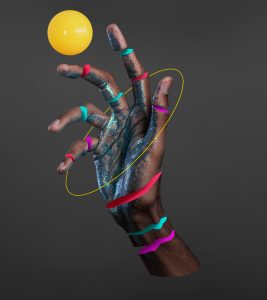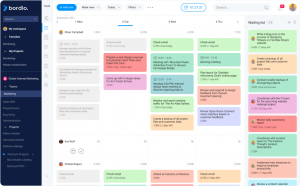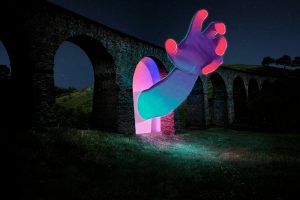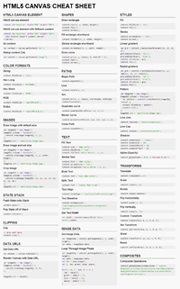The Digital Evolution of Art: From Pixels to Paint and Beyond
Description

Over time, art has undergone constant change, reflecting current events, popular culture, and, most importantly, technological development. Historically, the main avenues of expressing creativity have been via conventional art forms, including painting, sculpture, and graphics. However, a recent technical revolution has spawned an artistic process that the globe has witnessed. Electronics, software, and the Internet have changed how we perceive and interact with talent, making it more dynamic and available.
From 8-bit pixels to virtual canvases
When remembering the origins of digital art, it is impossible to bypass the early graphic editors and pixel art of 8-bit computers. This era began in the 70s and 80s of the XX century and represented a real breakthrough. Primitive by today's standards, these computers have provided artists with a new tool for creating art based on square pixels. These early works had their unique aesthetic, often limited to a palette of just a few colors. This led to the development of revolutionary graphic editors such as Adobe Photoshop, released in 1988. This and other editors provided artists with much more than a simple pixel tool – they offered a virtual canvas on which they could draw, mount, and edit images with incredible accuracy and depth.
Technologies are developing rapidly, introducing innovations such as digital project management tools or artificial intelligence responding to requests; all these are branches of progress. With technology development came other programs, such as Corel Painter, which focused on imitating traditional artistic methods in a digital environment, and Procreate for mobile devices, allowing artists to work anywhere. This software evolution has not only expanded the capabilities of artists but also changed the very understanding of art. Now, art has become more accessible, democratic, and innovative, and all this is thanks to the transition from simple pixel screens to virtual canvases and advanced drawing styles.

Machines in the service of creativity
Works of art created with the help of AI often amaze with their uniqueness and surprise. They can combine styles of different eras and cultures, creating something completely new and unpredictable. This allows artists to explore new boundaries of creativity, experiment, and go beyond traditional art.
However, along with the delight and admiration, the art created by AI also raises several questions. What does being an "artist" mean in the era of machine creativity? Who is the "author" of such a work – the machine or the person who programmed it? These issues require deep reflection and discussion in the artistic community.
Thus, generative art and AI represent a unique interweaving of technology and creativity, opening up new horizons and challenges to the art world. In this evolution, traditional art and digital creativity merge, creating a new era in art history.
The Era of Instagram and TikTok
Instagram - Gallery in your Pocket: Instagram, which started as a photo-sharing platform, has quickly become a digital gallery for artists. Features such as stories, IGTV, and carousels allowed artists to share completed works, their creation process, inspiration stories, and even lessons and master classes. This has created a new level of transparency and interaction between artists and their audiences.
TikTok - Dynamics and Movement in Digital Art: TikTok has brought an element of dynamics to art. In short videos, artists demonstrate their creativity, conduct training sessions, and interact with other creators. Animations, short films, and creation processes have become part of the TikTok ecosystem, making digital art more accessible and interactive.
However, the influence of social networks on art is not limited to only positive aspects. There is also a downside to the coin: the need for constant content creation, competition for the attention of the audience, as well as the risk of copying and copyright infringement.
NFT and digital art

The recent ascent of non-fungible tokens (NFT) has revolutionized the digital art. NFT provided artists with a unique opportunity to validate, sell, and transfer the rights to their digital works, which was previously difficult due to the nature of digital files.
Authenticity in the digital age: One of the main problems of digital art has always been the assertion of authorship and the restriction of copying. NFTs solve this problem by providing proof of the origin and uniqueness of the work. Each NFT is linked to a blockchain record confirming a digital asset's authenticity and ownership, making each work of art unique and non-fungible.
Commercialization of digital art: With the advent of NFT, artists have gained new commercial opportunities. Many digital artists who previously faced problems monetizing their creativity can now sell their works directly to collectors. This has led to new markets and platforms, such as OpenSea, Raible, and Foundation, which facilitate the purchase and sale of NFT art.
Discussions and criticism: Along with enthusiasm and opportunities, NFT brought discussions. Environmental issues related to the energy consumption of blockchain technologies, valuation matters and speculation, and criticism that NFT can support a culture of copying and re-appropriation without proper recognition have become hot discussion topics.
 Blog
Design
Development
Mobile
Inspiration
CSS
Javascript
News
Opinions
Politics
Menu
Blog
Design
Development
Mobile
Inspiration
CSS
Javascript
News
Opinions
Politics
Menu
